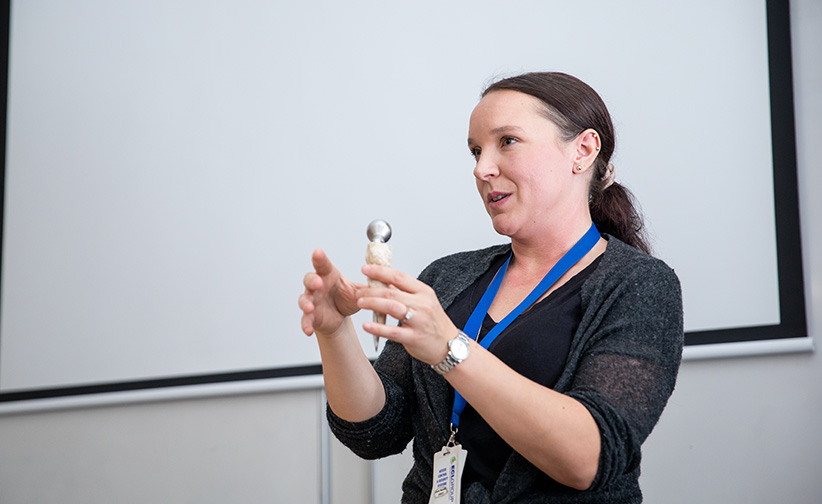
Dr Gabriella Lindberg holding a standard hip implant used in the clinic today to replace damaged cartilage and bone, demonstrating the issue of integrating metallic implants with living patient tissues.
The University of Otago's Health Sciences Division has awarded Dr Gabriella Lindberg a two-year postdoctoral fellowship, providing her a vote of confidence in her research future.
The appointment is made through the Division's Career Development Programme and is designed to support outstanding graduates, who have completed a doctoral degree within the last three years, and have the potential to become established as independent researchers within the tenure of their fellowship.
Lindberg made a compelling case for her appointment, promising research into repair strategies for damaged or lost cartilage, and including strong support from her mentor, Professor Tim Woodfield.
“I have the utmost confidence in Gabriella given her drive, excellent research skills and passion for the topic”, says Woodfield.
Lindberg's fellowship project involves combining cost-effective 3D-bioprinted customisable scaffolds with living human tissues in the laboratory to function as bioimplants. A wide range of collected cell donors (56% Pākehā, 33% Māori, and 11% Pacific) will be used to ensure that new treatments are optimised for the diverse population that is Aotearoa.
Addressing health inequities is important to Lindberg. “Working with cells from the wider population will allow us to further investigate and develop strategies that address some of the reasons why Māori and Polynesians currently have poorer postoperative outcomes compared with non-Māori patients following surgical interventions to treat osteoarthritis.”
“I'm excited about the prospect of developing a living 3D-model to explore the integration of cartilage bioimplants”, says Lindberg. “This will provide a scientifically robust stepping-stone between the laboratory and clinic”.
And the benefit for health treatment is even greater. This same technology can be applied to other tissues, such as bone, and for cancer drug screening.
Lindberg works with Professor Woodfield in his Christchurch Regenerative Medicine and Tissue Engineering (CReaTE) research group, which is a part of the Department of Orthopaedic Surgery and Musculoskeletal Medicine.
